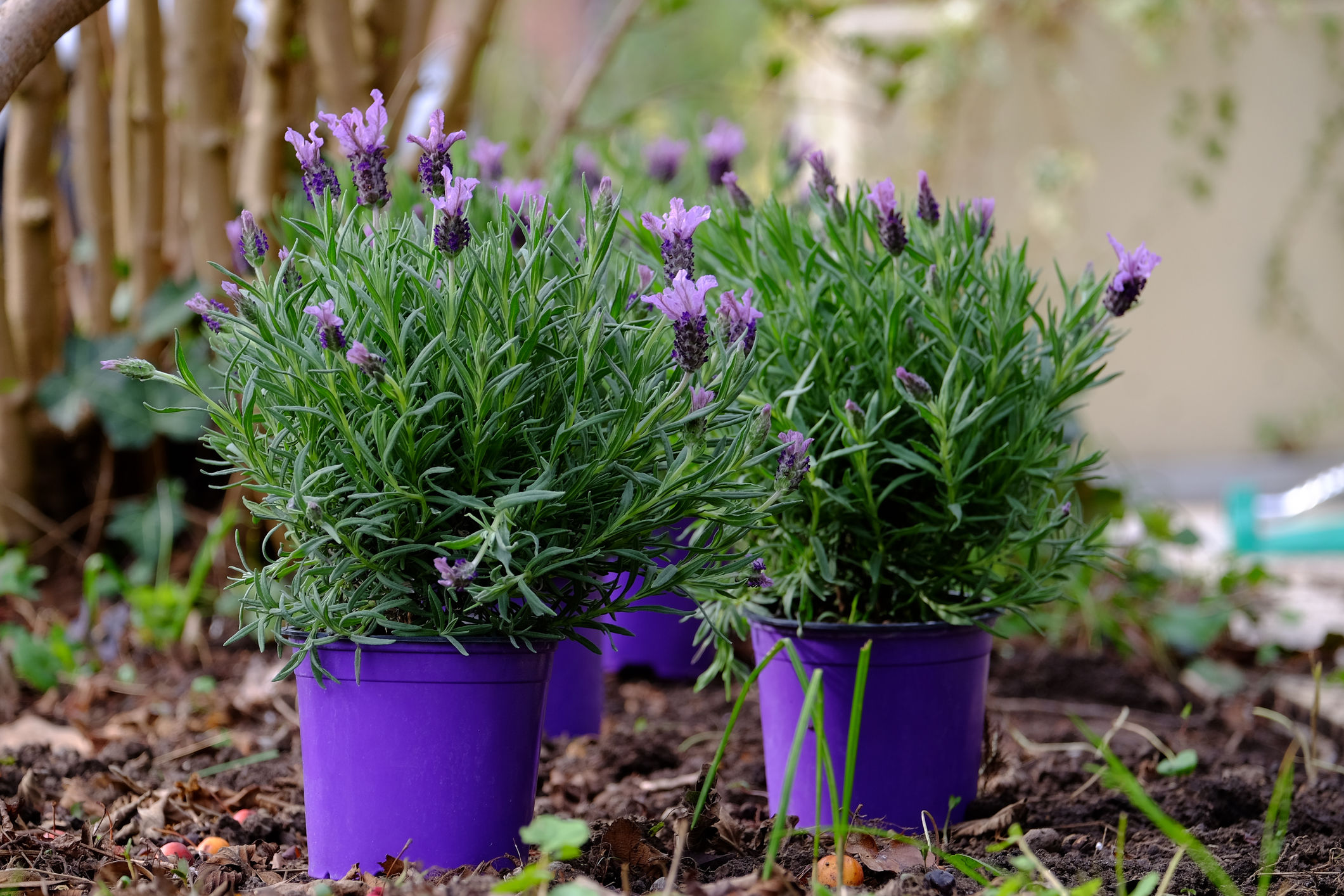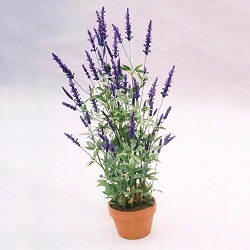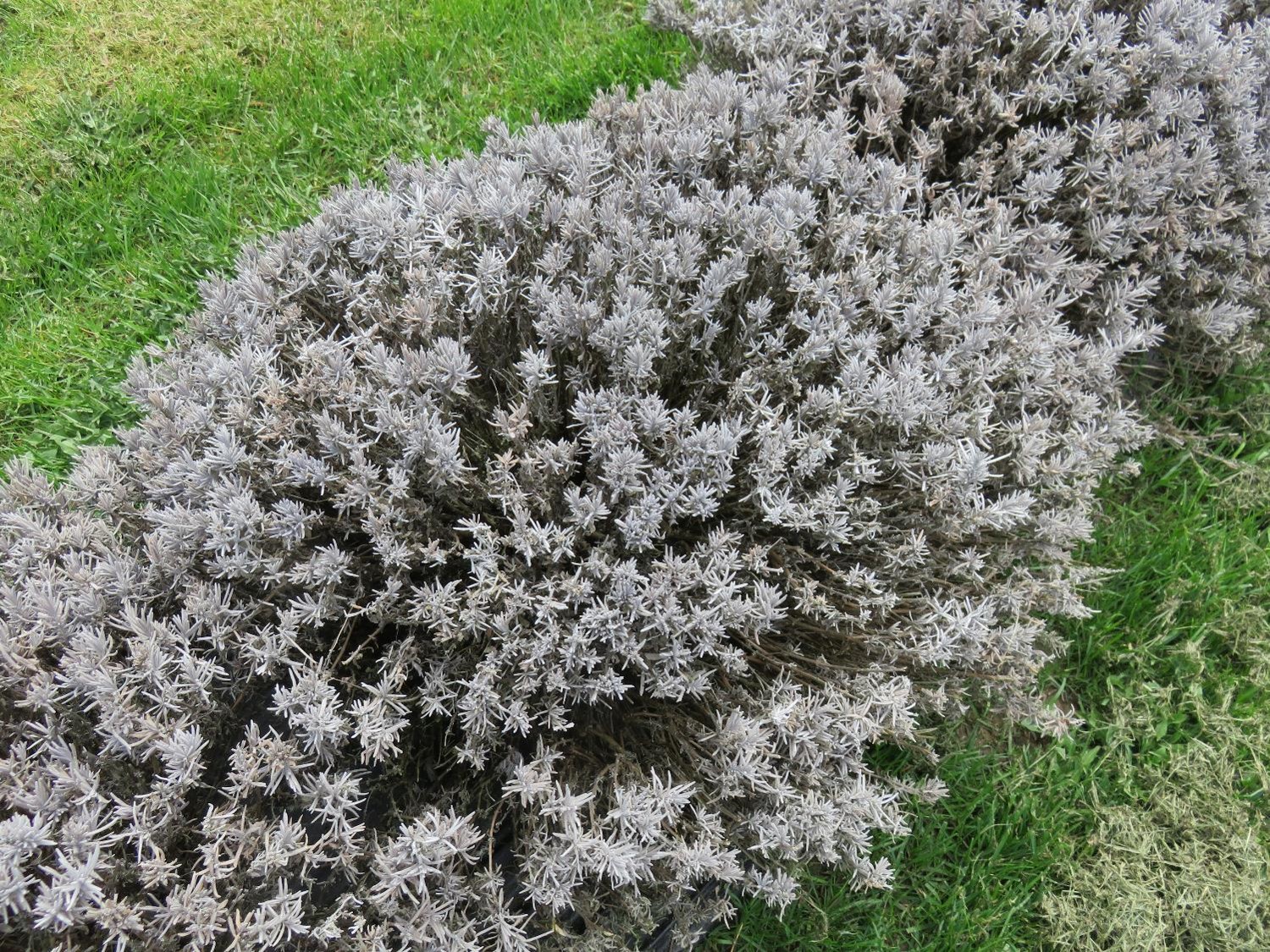
Depending on the species, your potted lavender may or may not survive the winter. French and Spanish lavenders cannot survive outdoors throughout the winter in locations that experience frost and must be taken within for protection, whilst English lavenders can survive winter in pots and tolerate frosts and cold temperatures.
English lavenders are considered hardy up to USDA zone 4, and they can withstand temperatures as low as -10°C (14°F). The cultivar Hidcote Superior can withstand chilly temperatures the best.
For best practices and advice on how to keep lavenders of all types alive through the winter and up to 15 years, continue reading.
Table of Contents
Lavenders That Survive Winter Outdoors in Pots

In contrast to French (Lavandula dentata) and Spanish (Lavandula stoechas), which are typically not cold hardy and will not survive winter in pots in cold locations, English lavenders are perennial plants that can withstand frost, snow, and temperatures as low as -10 C.
To determine the finest pots and containers for growing lavender, see my post.
If they are not brought indoors in the early Fall, French and Spanish lavenders will probably perish in the first winter frost since they need warmer temperatures to live.
However, in climates that do not endure frost and freezing winter temperatures, such as those in the Mediterranean region of Europe and the warmer US states, they will flourish with relatively little upkeep.
In general, French and Spanish lavenders thrive in regions with generally moderate winters and constant temperatures over 10°C (50°F).
If you live in a colder climate or there is an unanticipated drop in temperature and a higher likelihood of frost that will harm the lavender, it is advantageous to grow French and Spanish lavenders in pots because you can grow them outdoors for the majority of the year. However, if this is not possible, you can bring them indoors for winter protection.
The French and Spanish lavenders may be treated as an annual plant that needs to be renewed every year if they are not relocated indoors in regions that are too cold to support them in pots all year long.
You may take a number of measures and follow certain best practices to make sure your potted lavender survives the winter.
Ensure Potted Lavenders Survive Winter

1. Even if it is a smaller kind of lavender, planting it in a rather large pot is one of the keys to keeping potted lavenders alive over the winter.
The amount of soil in the pot will increase with its size. When the temperature drops, the soil will insulate the roots, keeping them safe from frost.
The minimum size of the container, with a proportionate depth, should be 16 inches wide if you’re growing lavender in a cooler area. Additionally, this will guarantee that the lavender will have adequate room when it is mature for established roots.
The lavender will be more susceptible to the cold the smaller the pot.
2. Planting the lavender in the right soil is an additional crucial step. The roots of lavender plants prefer to dry out in between waterings, so they require soil that drains properly and does not retain wet for extended periods. (If you’re uncertain, check out my article on how frequently to water lavender.)
Due to the soil’s propensity to be chilly and remain moist for longer throughout the winter, lavender plants in pots are especially vulnerable to root rot.
Root rot is easily avoidable with the right preparation. It is advised to grow lavender in potting soil or multipurpose soil that has been improved with coarse sand or gravel.
The pot’s drainage will be improved by the use of coarse sand or pebbles, which also don’t retain moisture as well as rich organic compost.
This is essentially a replication of the gravelly, sandy soil that lavender grows in naturally in the Mediterranean.
When supplementing the soil, a reasonable rule of thumb is to use one third (33%) sand or gravel and two thirds (66%) potting soil. When it comes to potted lavenders, however, too much sand and gravel is always preferable to not enough, so if you live in an area with a lot of rainfall, be generous.
By doing this, you can make sure that the soil in your potted lavender plants drains well and that the roots don’t rot throughout the winter.
3. Reducing irrigation over the winter is an additional crucial step. If the lavender is kept outside in a pot, watering should stop in the early fall and not continue until the first few weeks of spring.
Even in the heat of the summer, lavender plants can withstand drought conditions without needing frequent watering, and too much moisture will cause root rot. Rainfall will provide enough water for the lavender throughout the winter.
(For further information, see my article on watering lavender plants in containers.)
If the lavender variety you have indoors to protect it from frost is not cold-hardy, you will need to water it once every four to six weeks to keep the pot from drying out completely throughout the winter.
Specific Steps for French and Spanish Lavender Survival
French and Spanish lavenders must be brought indoors throughout the winter in colder locations because the majority of varieties cannot withstand frost and cold temperatures.
Even in the gloomier winter months, it is nevertheless crucial that the lavender receive some sunlight, so when you bring it inside, set it in the sunniest window of your home, garage, heated greenhouse, or any location where there is adequate room.
You must be careful where you place the lavender in your home since throughout the winter, lavender plants are in a state of dormancy. The surrounding temperature will change dramatically during the day if the lavender is directly exposed to forced air or radiators.
Lavenders may require watering every three weeks throughout the winter months in hotter, drier rooms, but just once every four to six weeks in those with more consistent temperatures.
In the winter, lavenders prefer somewhat lower temperatures since this more closely resembles their natural cycle than overly warm spaces.
Because garages typically stay above freezing in many locations, storing lavender there can be a smart compromise that offers protection without being overly warm.
If this isn’t possible, place the lavender in a bright window inside the house, ideally away from direct hot air currents, and it should be content there until the spring, when the weather has warmed up again and it’s time to move it back outside.
Before the first frost, bring the lavender plants inside always, and water them lightly once every four to six weeks. Spanish lavenders are the least cold-hardy varieties, so if it is expected to be below 10°C (50°F) for a lengthy period of time, bring them indoors.
(Read my article for additional details on how to care for both indoor and outdoor lavenders over the winter.)
Main Points
- With the proper care and preparation, English lavenders are cold hardy and can survive the winter in pots up to USDA zone 4.
- French and Spanish lavender pots should be taken indoors in the Fall, before the first frost of the Winter, to protect them from the cold.
- The better, the bigger the pot. More dirt is present in larger pots, helping to protect the lavender roots from the cold. Even if it is a lesser kind of lavender, pots that are 16 inches across and the same proportionate depth are appropriate.
- Sand or gravel amendments will improve drainage and prevent winter root rot in lavender plants grown in pots.
- Lavender in outdoor pots does not require watering in the winter because it is dormant and will receive enough moisture from rainfall. Only once every 4-6 weeks will potted lavender brought indoors for protection during the winter need to be watered.
